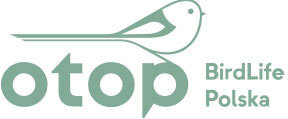European birds of conservation concern

Trial & Error: The Battle for Białowieża
4 October 2017BirdLife International releases the publication European birds of conservation concern: populations, trends and national responsibilities. This publication summarises the conservation status of 541 wild bird species in 50 European countries and territories (based on the 2016 IUCN Global Red List and taxonomic update), and aims to help national governments to easily identify the species that are in urgent need of attention and protection.
See publication –> here
Birds know no borders – this expression is especially relevant in Europe where most of the continent’s circa 540 regularly occurring wild bird species are found in more than one European country, with each holding an average of circa 200 breeding species. It is therefore not always obvious which countries have or should take most responsibility for conserving, protecting or restoring certain species.
In 1994, the first comprehensive assessment of the conservation status of all wild bird species in Europe found that 38% were in an unfavorable condition – these species were termed Species of European Conservation Concern (SPECs). A decade later the second assessment revealed that the situation had worsened, with 43% of species qualifying as SPECs. The third assessment has just been submitted for publication in the peer-reviewed literature, so the results are not yet available (although, unsurprisingly, they are broadly similar to the first two). Nevertheless the most recent update of the European Red List of Birds indicates that 70 European bird species as classified as of global conservation concern, compared to 40 species in 2004.
The launch of this publication comes at a very timely moment. Tomorrow, 21st of May, will mark the 25th anniversary of the EU Nature Directives [1] but also the first official “European Natura 2000 day” [2].
Iván Ramírez, Head of Conservation at Birdlife Europe & Central Asia said: “The European birds of conservation concern publication and the Natura 2000 day serve both as a celebration of the successful conservation measures implemented to protect species and sites, and as a call for Member States to keep up the good work and invest wisely in biodiversity”.
Anna Staneva, Species Conservation Officer at Birdlife International said: “This publication aims to provide clear information to help every European country and territory identify which Species of European Conservation Concern (SPECs) it holds, and thereby contribute to identifying the species that it has a high national responsibility for conserving. By presenting the data by country, and highlighting which species are of global and European conservation concern, we hope that more governments will acknowledge their responsibilities for particular species and take them into account when deciding how to allocate resources for nature conservation”.
Claudio Celada, Nature Conservation Director, LIPU (BirdLife Italy) said: “This publication sets clear species conservation priorities for each country in Europe. The key message is that we need to protect bird species across their entire range distribution. But at the same time, some pressing national priorities emerge – for example, five globally threatened species are still hunted in Italy, including the Rock Partridge. This is particularly alarming since Italy hosts 26% of the European breeding population.”

